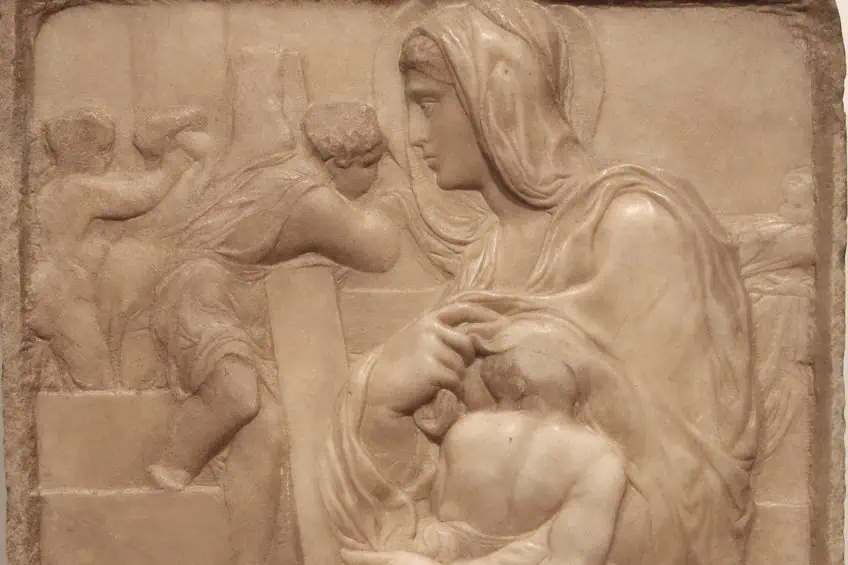Relief Sculpture – Sculptural Works in Two-Dimensions
Relief is not the first thing that comes to mind when we think of sculpture, even though it has been a major art form for centuries and can be found decorating the walls of buildings and rock faces across the globe. Below, we will unpack what relief sculpture is, the various types of relief sculpture, and its history, as well as take a look at some of the most famous examples of relief sculpture in the world!
What Is Relief Sculpture?
We often think of sculpture as standing alone, unattached to anything else. But unlike freestanding sculpture, relief sculpture, or relievo, is carved into a wall or other background surface, and projects from that surface. Traditionally, the height at which the sculpted figures project from the surface determines its classification. Thus, relief sculpture combines the three-dimensional arts (sculpture) and two-dimensional arts (pictorial) to produce a work that is reliant on a background surface, but still has sculptural three-dimensionality.
 Chimera from Darius the Great’s palace in Susa (c. 520 BCE); dynamosquito from France, CC BY-SA 2.0, via Wikimedia Commons
Chimera from Darius the Great’s palace in Susa (c. 520 BCE); dynamosquito from France, CC BY-SA 2.0, via Wikimedia Commons
There are more reliefs than freestanding sculptures, and this is due to various reasons, one of them being that a wider range of subjects can be portrayed in relief sculpture than a statue. For example, if a battle scene were to be sculpted as statues, this would require a large amount of space, materials, and time. Whereas a relief would save on resources and space. A second reason is that issues of physical balance and weight that can be critical for freestanding sculpture do not come about for reliefs because they are connected to a background surface. Lastly, reliefs are especially suitable for architectural projects, which typically commission the most sculptures, because they are carved onto ceilings, portals, walls, floors, and other two-dimensional surfaces.
This relief architecture allows the artworks to serve a narrative function and as decoration.
Reliefs range in styles and patterns, with some being very abstract, while others are more figurative. Many different cultures have produced abstract reliefs, such as the ancient Greeks, Mexicans, the Celts, Vikings, and Islam, with both curvilinear and geometric shapes being found. Figurative or representational reliefs are strongly associated with sculpture in Europe from the Renaissance period onwards, as well as with the ancient Romans, the Greeks, and relief architecture of the Gothic and Romanesque styles.
What Are the Types of Relief Sculpture?
Relief sculpture can fall into a number of categories. Below, we have listed the three main types of relief sculpture; low relief, high relief, and sunken relief, as well as listing other types to give you a broader perspective.
- Low relief, also known as basso-relievo, or bas-relief, is a type of relief sculpture that extends only slightly from its background surface.
- High relief, also known as alto-relievo, or alto-relief, projects from the surface at a greater scale than low relief. What is a high relief sculpture is determined by the height; the carved figures stand out from the background at half or more of its natural circumference, and certain parts may even be completely detached from the background, thus making them completely three-dimensional. Some sculptors also use middle-relief, or mezzo-relievo, which falls somewhere in between low and high relief.
- Sunken relief, which is also called intaglio relief, coelanaglyphic, or incised relief, is carved in such a way that the image is sunken into the background surface. The figures are carved in a low relief that falls below the level of the flat surface, with sharp contour lines creating a shadowy frame. This style of relief is found largely in ancient Egyptian art.
- Statiaccio relief, or rilievo schiacciato, is a more subtle style and is particularly connected with the work of Donatello (1386-1466) from the 15th century. It is a type of low relief produced partly with carved relief and partly with engraved chiseled lines to create a finer design.
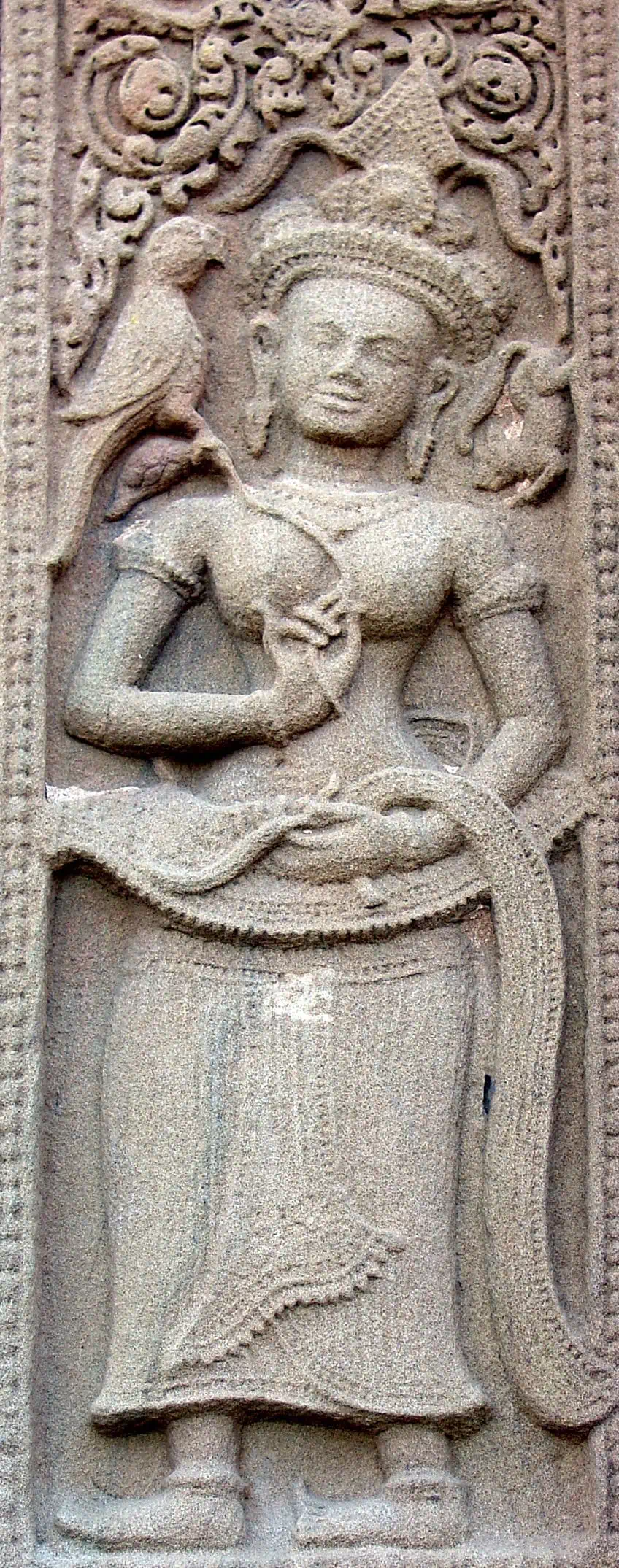
A Brief History of Relief Sculpture
To put it simply, the evolution of relief sculpture involved moving back and forth between the dominance of sculpture and the pictorial. For example, reliefs in Greek art are more contracted, with pictures being less expanded. The focus is on the sculptural solid figures themselves, while the background plane is finite and not used for receding perspective, creating a sort of barrier in front of which the figures live. Renaissance relief, on the other hand, uses perspective to the fullest, presenting the viewer with a three-dimensional spatial connection on a two-dimensional surface.
Below, we will take a look at the history of relief sculpture from the prehistoric to contemporary.
Prehistoric Relief Sculpture
Upper Paleolithic (c. 25,000 BCE) cave art is where we will find the earliest known examples of relief. Venus of Laussel (23,000 BCE) is a limestone bas-relief found in Dordogne, and is one of the oldest reliefs in France, alongside the rare relief found at Les Eyzies de Tayac, Abri du Poisson Cave Salmon Carving (23,000 BCE). Other examples found in France include the Cap Blanc Frieze (15,000 BCE), the Roc-de-Sers Cave Frieze (17,200 BCE), and Roc-aux-Sorciers (12,000 BCE). In Russia, clay reliefs have been found in the Kapova Cave, which have unfortunately been badly preserved. From the Neolithic era (c. 10,000 BCE-2,200 BCE), numerous megaliths have been found with reliefs incised on them.

Ancient Relief Sculpture
Ancient civilizations (c. 3500-600 BCE), such as the Assyrians, Egyptians, and other Middle Eastern cultures commonly used relief sculpture on their stone buildings. The low-relief dragons and lions depicted on the Ishtar Gate in Babylon are a great example in Mesopotamia. For Assyrian art, the carvings of lion-hunts in alabaster presenting the kings Ashurbanipal (c. 685-631 BCE) and Ashurnasirpal II (9th century BCE), is a typical example. Ancient Egyptian sculptors, as mentioned previously, liked to use sunken relief where people are portrayed standing sideways.
Many examples of sunken relief sculpture can be found at the Karnak Temple. Chinese sculptors also employed low reliefs.
It was only during Classical Antiquity (c. 8th century BCE – 5th century BCE) that high reliefs were more commonly produced. Notable examples of relief sculptures are in Attic tombs (4th century BCE), as well as the friezes in classical temples like the Parthenon. Relief sculpture was also produced during the Hellenistic period (323 BCE – 32 BCE), with the Altar of Zeus being one example. Early Christian sculpture prominently features reliefs, particularly in wealthy Christians’ sarcophagi during the second and third centuries CE. Abstract reliefs emerged in many cultures across the world from 600 to 1100 CE, such as the Norse or Viking culture, the Mexico Mixtec culture, and in Middle East Islamic territories.
Medieval Relief Sculpture
From about 1000-1200 in Europe, architecture is what took the form of Christian art for the most part as seen in the development of cathedrals, churches, and abbeys that was funded by the Christian Church of Rome. Although statues were produced in Christian art, relief sculpture is what they focused on the most as shown by the works that decorate Romanesque cathedral portals in Germany, England, France, and other European countries. This tradition was maintained during the Gothic period, though higher relief was preferred by sculptors of the period as an interest in statuary was restored during the fourteenth century.
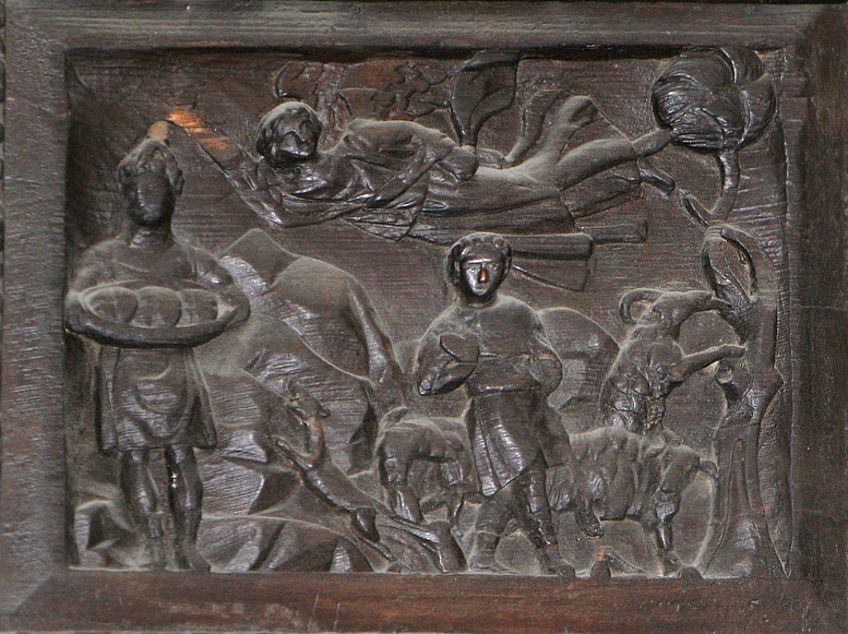
The Renaissance and Beyond
A discernible change was introduced with the Italian Renaissance during the 15th and 16th centuries. This change had to do with using perspective to its fullest potential. In the foreground of a composition, figures were carved in high relief to make them appear to be closer to the viewer, while the figures in the background were carved in low relief to give the impression of distance. To push the envelope further, Donatello (1386 – 1466) added textural contrasts in his sculpture. Thus, sculptors of the Renaissance generally used the two-dimensional background surface to its maximum pictorial potential.
Although, not all of them did, as can be seen in Michelangelo’s (1475 – 1564) relief style, and Desiderio da Settignano’s (1428 – 1464) fine low reliefs in terracotta and marble.
The Fontainebleau School was first established in about 1530 which employed the French Mannerist art style, and became renowned for its highly detailed relief sculpture in stucco. The medium was cut into strips, and twisted together after first rolling the ends, forming remarkable shapes. Rosso Fiorentino (1494 – 1540) and Francesco Primaticcio (1504 – 1570) were two of the school’s key artists.
The pictorial approach to relief sculpture was further developed during the Baroque period (c. 1600 – 1750). Often these compositions were huge, and sometimes became almost like paintings themselves in complexity and scale. This is shown in Bernini’s (1598 – 1680) Ecstasy of Saint Teresa (1647 – 1652), in which the figures are nearly carved completely in the round but with a marble altar encasing them. Bertal Thorvaldsen (1770 – 1844) and Antonio Canova (1757 – 1822) were two advocates of Neoclassical sculpture that brought back the use of low reliefs temporarily, but in general, the pictorial style of the Renaissance succeeded, even reaching a peak in the 19th century.
Six Famous Relief Sculptures You Need to Know
Magnificent relief sculptures can be found in almost every major city, some with intricately detailed designs and others telling stories of their wars, histories, and kings. Below, we have listed some of the most famous relief sculptures in history, where they are located, and the artists that created them.
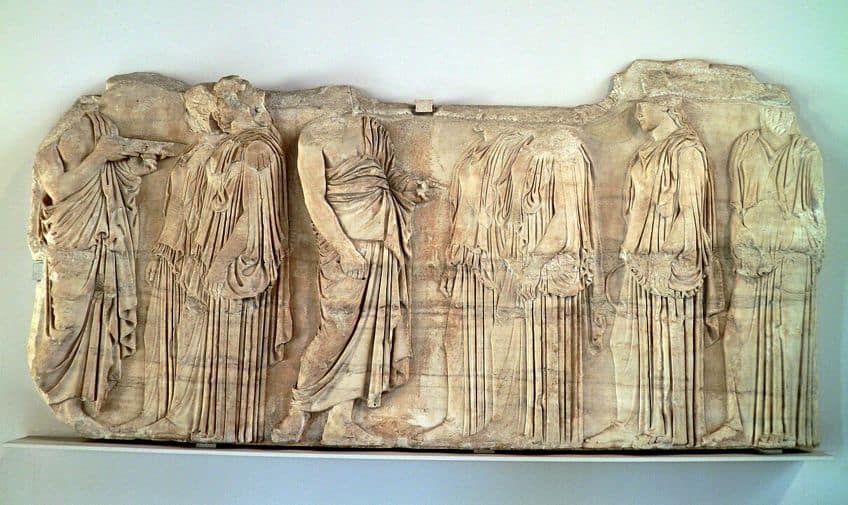
The Great Hypostyle Hall of the Temple of Karnak (c. 1290 – 1224 BCE) by Egyptian Pharaohs
| Artist | Egyptian Pharaohs |
| Date Created | c. 1290 – 1224 BCE |
| Medium | Sandstone, red stone, granite, limestone, and other types of stone |
| Dimensions (m2) | 5,000 |
| Current Location | Luxor City, Luxor, Egypt |
Within the Temple of Karnak in Egypt we find The Great Hypostyle Hall (c. 1290-1224 BCE), located in the area dedicated to the god Amon-Re. Built during the 19th Dynasty of ancient Egypt, the hall was erected by the pharaoh Seti I who reigned from about 1291-1279 BCE, and was kept by succeeding pharaohs, including Ramesses III, IV, and VI who each added inscriptions and reliefs to the columns and walls.
Seti I contributed the majority of raised reliefs that decorate the northern side of the hall.
Ramesses II completed the southern side, beginning with raised relief at the start of his reign before transitioning to using sunken relief instead. He also appropriated the work that decorates the main processional ways of the north-south and east-west sides from his father, making observers think that Ramesses II designed the building. The reliefs of Seti I however were respected.
Battle scenes are depicted on the outer north (Seti I) and south (Ramesses II) walls. The purpose of these reliefs were ideological and religious, but they also held the important function of documenting the wars that these kings were part of. The peace treaty that Ramesses II signed between the Egyptians and the Hittites in the Year 21 of his reign is found on another wall connecting to the southern wall.

Ishtar Gate (c. 575 BCE) by King Nebuchadnezzar II
| Artist | King Nebuchadnezzar II (c. 642 – 562 BCE) |
| Date Created | c. 575 BCE |
| Medium | Glazed bricks |
| Dimensions (cm) | 1400 x 1500 |
| Current Location | Hillah, Babil Governorate, Iraq |
The Ishtar Gate (575 BCE) in present-day Iraq is famous for the beautiful artworks that line its grand walls along the processional way, including the low reliefs of lions and dragons. Built under King Nebuchadnezzar II (1642-562 BCE) on the northside of Babylon, it was the most important entryway to the ancient city, and its eighth gate. It is named after the deity Ishtar, but many other Babylonian deities are also honored via different animals depicted on the walls. The lions were connected with Ishtar, the deity of fertility, love, war, and sex, while the dragons were connected to the supreme god, Marduk.
The blue enameled tiles that decorate the gate are said to be made of the semi-precious stone lapis lazuli, but this is still being debated.
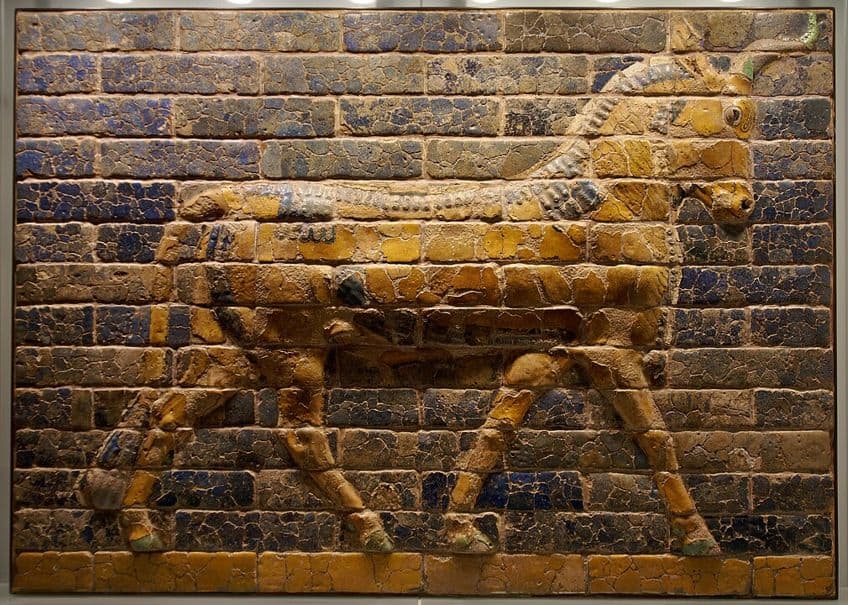
Trajan’s Column (c. 106 – 113 CE) by Apollodoros of Damascus
| Artist | Apollodoros of Damascus (2nd century CE) |
| Date Created | c. 106 – 113 CE |
| Medium | Carrara marble |
| Dimensions (m) | Height: 38 |
| Current Location | Via dei Fori Imperiali, Rome, Italy |
Trajan’s Column (106-113 CE) or Colonna Traiana is one of the most famous examples of Roman art in the form of a monument celebrating the emperor Trajan’s (53-117 CE) military triumphs in the Dacian Wars that took place in the Carpathian Mountains and Transylvania. The column is made of Carrara marble and is engraved with a frieze that wraps around it 23 times. The frieze is considered the most prominent work of ancient Roman relief sculpture. We know the column to have been designed by Apollodoros of Damascus (2nd century CE), a Greek architect born in Damascus, but the sculptors and stonemasons who produced the reliefs are unknown. Standing at a height of 35 meters, Tajan’s Column is an example of the Roman order of architecture called the Doric order. The frieze is based on Greek pottery designs from the 5th century.
These designs are also used in both the Greek sculpture of the Pergamon Altar from the Hellenistic period, and in the Parthenon from the High Classical period.
The narrative frieze is in low relief, rarely more than 2,54 cm deep, and forms an engraved band around the column measuring 1.22 meters high and 190.5 meters long. The frieze in the upper parts of the column was meant to be viewed from surrounding buildings, as they are too high to be seen from the ground. Optical foreshortening that would occur was reduced with adjustments. For example, the figures at the top measured 127 cm, while they measured 88.9 cm at the base. The sculpture and architecture of Trajan’s Column had a significant influence on late Roman buildings and art, and a very similar column with low relief sculpture was built sixteen centuries later in Paris in Place Vendome to show respect for Napoleon’s victory at Austerlitz.
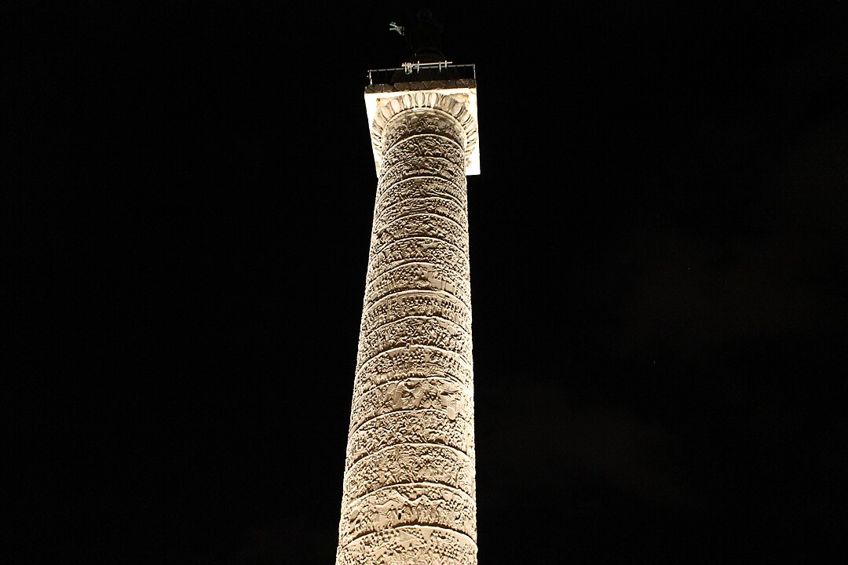
Madonna of the Stairs (1490 – 1492) by Michelangelo
| Artist | Michelangelo (1475 – 1564) |
| Date Created | 1490 – 1492 |
| Medium | Marble |
| Dimensions (cm) | 56.7 x 40.1 |
| Current Location | Casa Buonarroti, Florence, Italy |
Michelangelo (1475 – 1564) was about 15 years of age when he created Madonna of the Stairs (1490-1492). It was one of his earliest two sculptures, the other being the Battle of the Centaurs (1490-1492) which is also a famous relief. The art historian Giorgio Vasari mentioned Madonna of the Stairs as an artwork by Michelangelo first in his book, Lives of the Most Excellent Painters, Sculptors, and Architects (1568).
In this work, Michelangelo pays homage to Donatello’s Stiacciato low reliefs.
This was both done with the thickness variations, technique, foreshortening, and iconography. Madonna is depicted in profile and sitting on a stone block, while she looks away from the viewer. From edge to edge, her figure takes up the entire length of the relief space. The monumentality that she holds resembles that of classical relief sculpture.
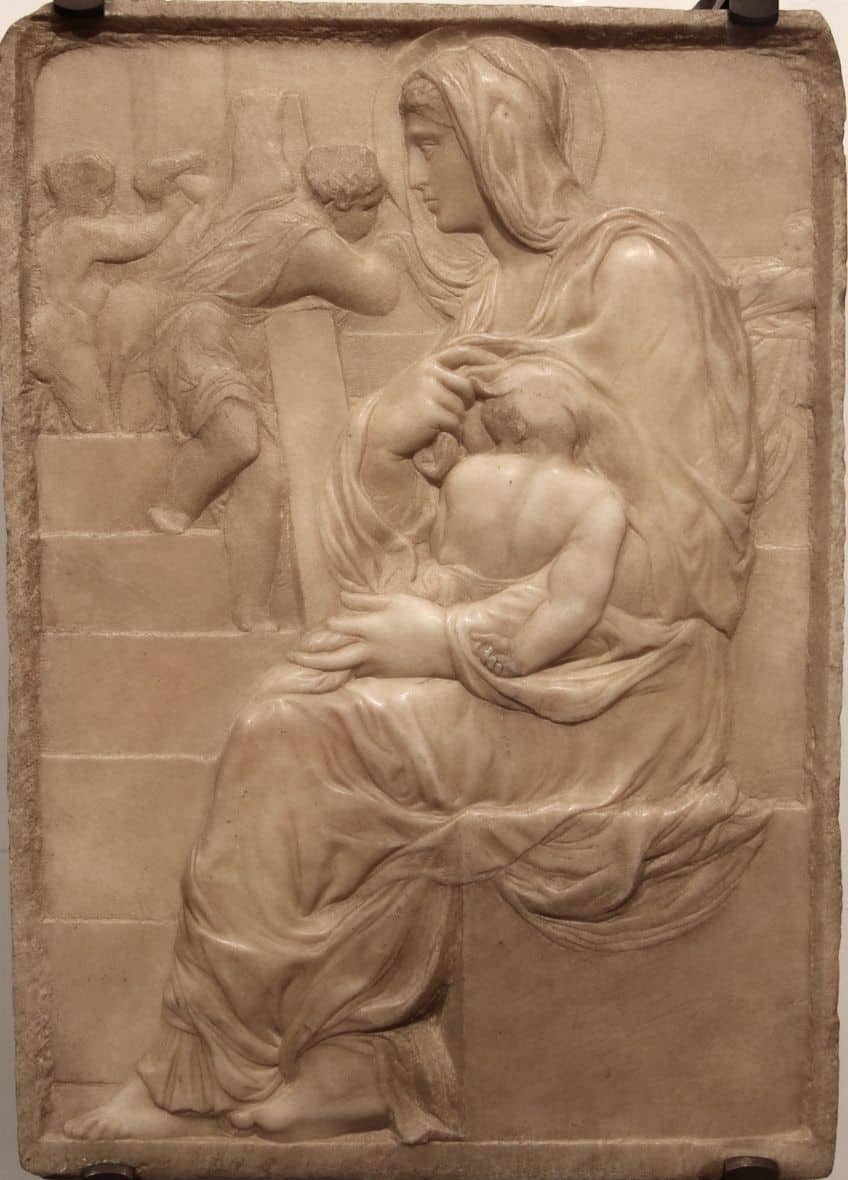
Gates of Hell (1880 – 1917) by Auguste Rodin
| Artist | Auguste Rodin (1840 – 1917) |
| Date Created | 1880 – 1917 |
| Medium | Bronze |
| Dimensions (cm) | 600 x 400 x 100 |
| Current Location | The Rodin Museum, Philadelphia, United States |
The French artist Auguste Rodin (1840 – 1917) created the Gates of Hell (1880-1917), which is a monumental work in bronze depicting the first part of the Divine Comedy (1321) by Dante Alighieri (1265-1321), called the Inferno. Several casts were made of the relief which are located in various parts of the world. The original plaster cast is held in Paris, France at the Musée D’Orsay, while the first bronze cast is in the United States, at the Rodin Museum in Philadelphia.
The figures are depicted in various levels of relief, while there are a few figures standing completely in the round.
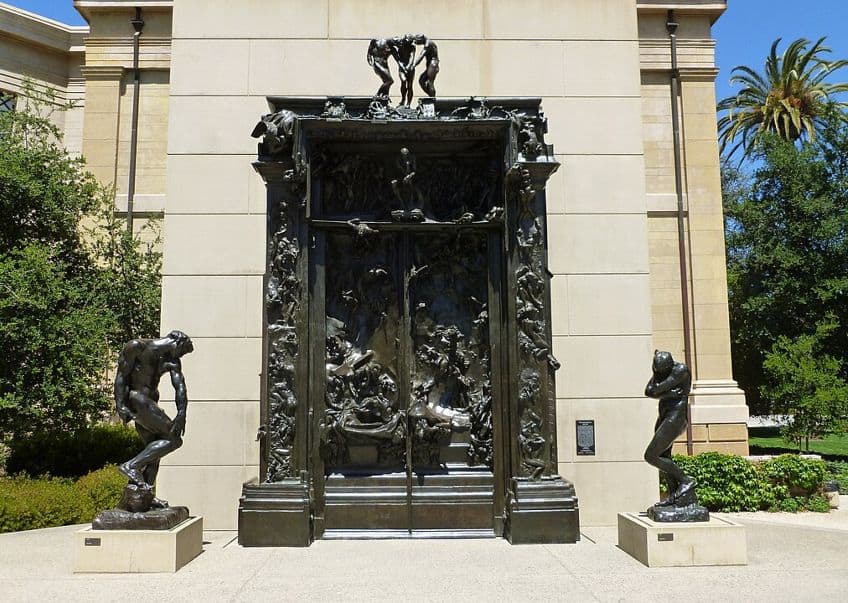
Mount Rushmore National Memorial (1927 – 1941) by Gutzon Borglum
| Artist | Gutzon Borglum (1867 – 1941) |
| Date Created | 1927 – 1941 |
| Medium | Granite |
| Dimensions (m) | Each face is 18 meters high |
| Currently Location | Mount Rushmore, South Dakota, United States |
The colossal sculpture, Mount Rushmore National Memorial (1927-1941) is the most famous relief sculpture produced in the 20th century. It was created under the American sculptor, Gutzon Borglum (1867 – 1941) and carved into the face of the granite mountain in the Black Hills of Keystone, South Dakota. The portraits of Thomas Jefferson, Theodore Roosevelt, George Washington, and Abraham Lincoln make up the sculpture. These four presidents were chosen as they represent the birth of the United States, its development, and preservation.

The location of Mount Rushmore was chosen by Borglum partly to take advantage of the sun exposure the work would have facing southeast. The historian, Doane Robinson originally came up with the idea for the carving, but wanted it to feature Western American heroes. Borglum chose the four presidents as he felt that the work should have broader appeal. He was not wrong, as over two million visitors flock to view this high relief sculpture per year.
That is it for our discussion on relief sculpture! Humans have been producing relief sculpture and relief architecture since prehistoric times, and this form of art is still going strong. Some contemporary artists who use relief sculpture include Brad Spencer (Present), Goga Tandashvili (Present), Gabriel Schama (1985 – Present), and Duffy London (present), to name a few. We hope that this article has inspired you to further your research into relief sculpture and to find some personal favorites!
Frequently Asked Questions
What Is Relief Sculpture?
Relief sculpture, or relievo, is sculpture that is carved into a wall or other background surface and projects from that surface. It combines the three-dimensional arts (sculpture) and two-dimensional arts (pictorial) to produce a work that is reliant on a background surface, but still has sculptural three-dimensionality.
What Characteristics Does Relief Sculpture Have?
Whether the relief sculpture is made from stone, bronze, or wood, it is characteristic of a relief sculpture to be decorative in shape, often depicting a narrative that is attached to a two-dimensional surface or wall.
What Are the Three Major Types of Relief?
The three main types of relief sculpture are low, high, and sunken relief. Low relief, or bas-relief, is a type of relief sculpture that extends only slightly from its background surface. High relief, or alto-relief, projects from the surface at a greater scale than low relief. What is considered a high relief sculpture depends on the height; the carved figures stand out from the background at half or more of its natural circumference, and certain parts may even be completely detached from the background, thus making them completely three-dimensional. Sunken relief is carved in such a way that the image is sunken into the background surface. The figures are carved in a low relief that falls below the level of the flat surface.
Jaycene-Fay Ravenscroft is a writer, poet, and creative based in South Africa, boasting over 6 years of experience working in a contemporary art gallery. She earned her Bachelor of Arts degree with majors in Art History and Ancient History from the University of South Africa, supplementing her studies with courses in Archaeology and Anthropology. Driven by a passion for learning, Jaycene-Fay finds inspiration in symbology and the interconnectedness of the world. Trained to analyze and critique art, she is enthusiastic about delving into the meanings behind each artwork, exploring its ties to the artist’s cultural, historical, and social context. Writing serves as Jaycene-Fay’s means of researching, sharing knowledge, and creatively expressing herself. For artfilemagazine, Jaycene-Fay writes articles on art history with a focus on historical paintings.
Learn more about Jaycene-Fay Ravenscroft and about us.
Cite this Article
Jaycene Fay, Ravenscroft, “Relief Sculpture – Sculptural Works in Two-Dimensions.” artfilemagazine – Your Online Art Source. November 30, 2023. URL: https://artfilemagazine.com/relief-sculpture/
Ravenscroft, J. (2023, 30 November). Relief Sculpture – Sculptural Works in Two-Dimensions. artfilemagazine – Your Online Art Source. https://artfilemagazine.com/relief-sculpture/
Ravenscroft, Jaycene Fay. “Relief Sculpture – Sculptural Works in Two-Dimensions.” artfilemagazine – Your Online Art Source, November 30, 2023. https://artfilemagazine.com/relief-sculpture/.


